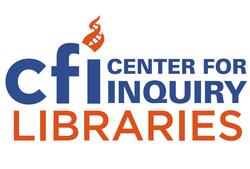The Martin T. Orne Collection, 1954 - 2000
Collection context
Summary
- Creator:
- Orne, Martin T.
- Abstract:
- This collection was accumulated during the course of Dr. Martin Orne’s career as a professor, consultant, therapist and researcher. It includes five series: correspondence, business records, legal files, Anne Sexton materials, and False Memory Syndrome Foundation.
- Extent:
- 118.0 cubic feet 67 file drawers
- Language:
- English
Background
- Scope and content:
-
This collection includes folders, correspondence on a variety of paper types, videocassettes, audiocassettes, books, legal papers, and binders. The bulk of the materials span the 1970s – 1990s, while the totality of the collection includes material from the 1950s – 2010s.
The Martin Orne papers are the best archival collection on the study and research of hypnosis in the world. It represents over 50 years of his personal research into the topic, the work of the Institute of Experimental Psychiatry, thousands of pages of correspondence between himself and colleagues and his legal testimony. In addition, the Anne Sexton series gives fascinating insight into his professional work with the Noble prize–winning poet. With the False Memory Syndrome Foundation series, researchers will learn about his work on the Advisory Board of the Foundation and how hypnosis and false memory syndrome are intertwined.
- Biographical / historical:
-
Martin Theodore Orne was born in Vienna, Austria in 1927 to a surgeon father and psychiatrist mother. Before World War II they immigrated to America and settled in Boston. Martin joined the U.S. Army at 18 and after an honorable discharge began studying his life–long passion of hypnosis and hypnotic phenomenon, particularly when it came to age regression in those under hypnosis. Martin did his undergraduate and Master’s level work at Harvard, attended Tufts University for a medical degree, and went back to Harvard for a Ph.D. in Psychology. When he completed his Ph.D. he was 31 years old. Armed with degrees and an unrelenting drive he traveled to Phoenix, Arizona where he studied hypnosis under Milton Erikson, a leading academic figure of the study of hypnosis. He spent his time studying the depth of hypnotic trances and developed the skill to observe cues in subjects while in various hypnotic states. Focusing on the cues given by subjects while under hypnosis became a focus of his work for the rest of his life. Moving back to Boston to lecture at Harvard, he established the Hypnosis Research Project at the Massachusetts Mental Health Center, and spent a term at the University of Sydney in Australia as a Fulbright Scholar. In 1961 he founded the Institute for Experimental Psychiatry and in 1962 married Emily Farrell Carota, his professional and personal collaborator. He became Executive Director of the Institute and held that position until his death, while his wife worked tirelessly as the administrative director for the Institute. During his lifetime Orne published over 150 scientific articles, contributed to numerous books, book reviews, and encyclopedic entries. His lifelong pursuit of understanding and quantifying hypnosis opened the door for understanding and examining the internal realities of patients while under trance. He defined hypnosis as an alteration or distortion of perception, memory and emphasized the influences such as situation, ecology, and changes in subjective awareness. Through this research and meticulous experimental design he recognized that subjects were highly suggestible, gaps in memory were often filled with details that would normally be disregarded when fully awake. This lead to his belief that within some subjects false memories could be implanted. In the 1970s, there was explosive growth in the use of forensic hypnosis by police officers, or those working for police departments who used hypnosis to assist in recall for crimes. Orne was called to testify in many national high profile cases, was cited in more than 30 cases by state supreme courts, and ultimately by the U.S. Supreme Court. Orne’s testimonies resulted in widely adopted guidelines restricting the use of hypnosis in forensic cases on the federal level. His expertise was used in cases such as Patty Hearst, John DeLorean, The Hillside Strangler (Kenneth Bianchi), Ted Bundy, William Milligan, and many cases of false memory. His legal expertise afforded him the opportunity to become an expert witness in similar criminal cases around the world. He passed away at the age of 72, in the year 2000 and his wife, Emily along with the Institute for Experimental Psychiatry, carried on his work.
Indexed terms
Access and use
- Restrictions:
-
This collection can be used by appointment only. A non–disclosure form will be given to the researcher, and any publications or media created by using this collection will require a copy be given to the Center for Inquiry libraries.
- Terms of access:
-
Ownership rights and usage were transferred to the Center for Inquiry and should be discussed between researcher and the Director of Libraries.
- Location of this collection:
- Contact:
- (716) 636-4869CFILibraries@centerforinquiry.org

